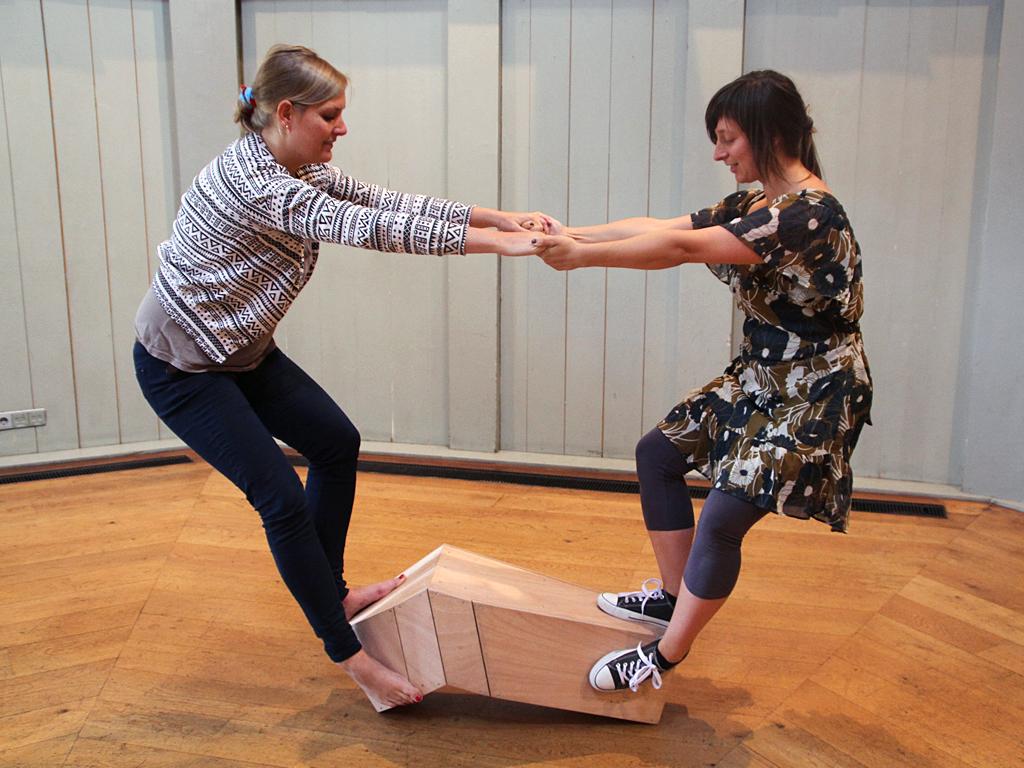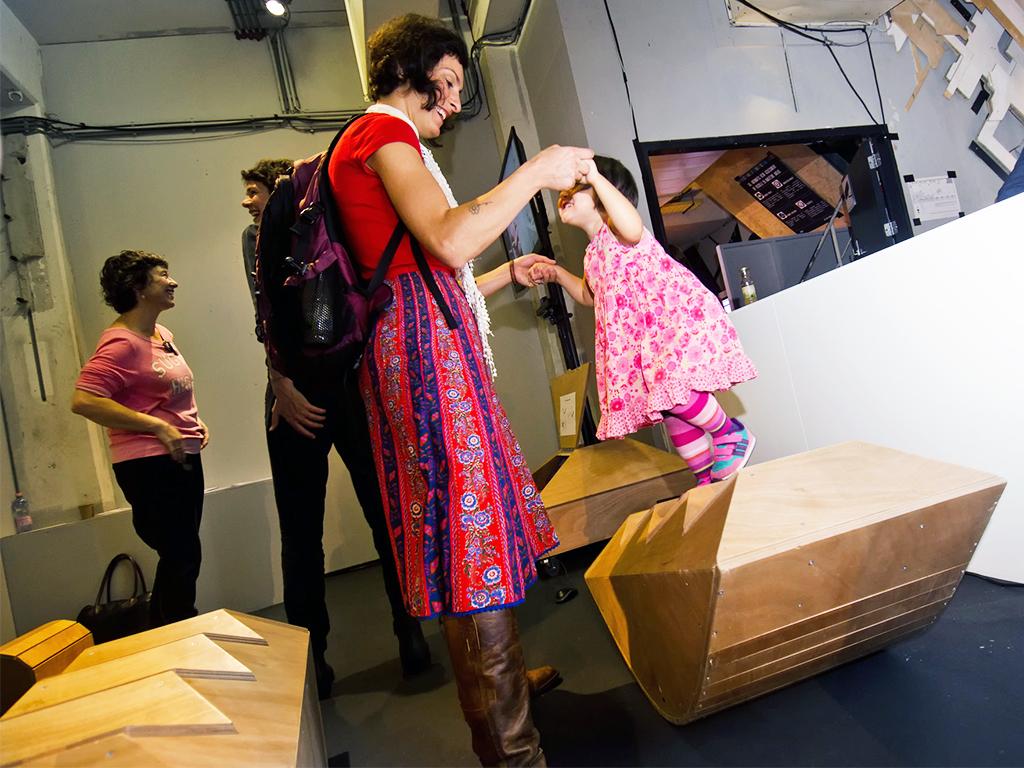Creative Learning Lab of Waag and Kenninsnet are researching the possibilities of embodied learning and what role it can play in learning 21st century skills. Some of the research questions are: can the body and movement function as interfaces in 21st century skills? How is education about 21st century skills enriched by embodied learning? Is knowledge stored and retrieved better when one adds a physical component in the educational process? In what way does embodied learning contribute in learning 21st century skills?
Cooperation with an artist
For this project and the research of embodied learning options a collaboration started with artist Marloeke van der Vlugt, maker of interactive installations. Artists can generate out-of-the-box ideas. They can create new, unlogic possibilities and give their unique and personal vision in projects.
Relation between technology and movement
Marloeke connects her arts practice and personal research to this research project. “In my work, I research the relation between technology, movement and touch. The question is how this relation influences the way we communicate with each other”, says Marloeke. In her project Series Patchmaker N°1 she explored with sensor technology how a performer can use touch and movement to find the history of the body. She also developed a theatre show in which an interactive system measured the distance between the seats and the visitor's backs. This information was used to manipulate the sound, lighting and video of the performance.
Learning with an open mind
The results of these earlier installations will form the base to create a new installation. Again, the body will actively be used with the aim to to stimulate 21st century skills like cooperation and creativity. For this project Marloeke did literature research and held interviews with experts in the field of 21st century skills and embodied learning. This led to a number of starting points and conditions for the next installation. “My conclusion after all these talks about 21st century skills is that this is in fact about learning with an open mind and a concerned attitude, that makes you ready to learn new tasks and absorb new knowledge”, according to Marloeke.
Physical awareness
Embodied learning is a form of learning where to whole body is used to get results. In an Embodied Learning environment the interaction between body and the space has a central position. The body and physical movement are thus an important interface for learning in a hybrid space (both virtual as physical). The thought behind it is that physical interaction can stimulate existential learning. Wearables, tangible intelligent objects, sensor technology, motion-tracking and interactieve video all come together in this way of learning, stemming from physical action.

Research by Glenberg on embodied cognition showed that knowledge and information is stored better when a (sensorial) experience is offered, like a fragrance or physical effect. This makes that the installation should develop a physical awareness with users by giving direct feedback and the possibility to reflect on it. Another condition is that it should enable to see yourself in relation to others and to communicate with those others.
Research by design
This installation will be developed in collaboration with experts and people from education. This will happen based on the demands and conditions Marloeke has proposed. These are then translated into the prototype installation. In April, pupils from secondary education will test this first prototype, so that it still can be adapted when needed.
This article (in Dutch) was written by Madelief Keyser at Kennisnet. Translation by Waag.


